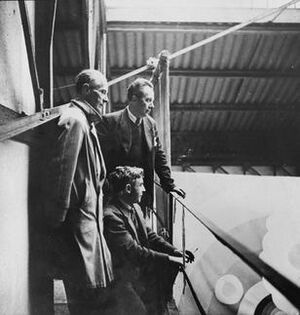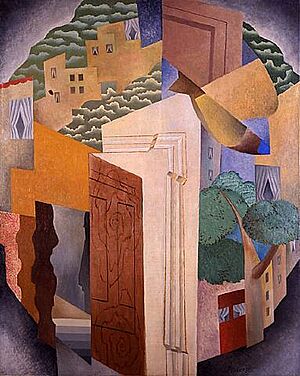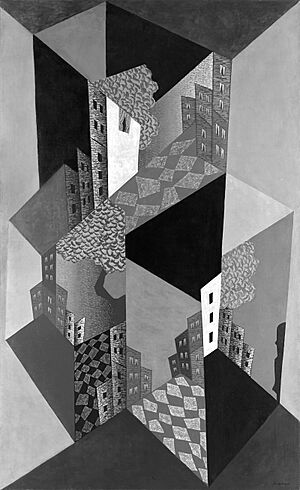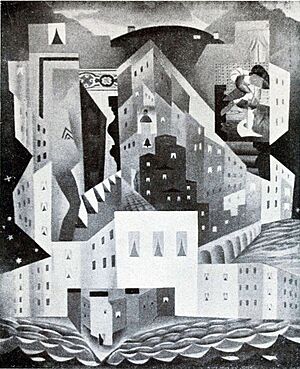Léopold Survage facts for kids
Léopold Frédéric Léopoldowitsch Survage (born July 31, 1879 – died October 31, 1968) was a talented painter. He was born in Finland but became a French citizen. He started his art journey in Russia, joining a group of artists called the Russian avant-garde. Later, he moved to Paris, France. There, he shared a studio with another famous artist, Amedeo Modigliani. Survage was also known for trying to create abstract movies, which was a very new idea at the time! He even designed sets and costumes for the famous Ballets Russes.
Contents
About Léopold Survage's Background
Léopold Survage was French, but his family had roots in Russia, Denmark, and Finland. He was born in a town called Lappeenranta in Finland. Sometimes, people thought he was born in Moscow, Russia. He also had a few different names, like Léopold Sturzwage.
Léopold Survage's Life and Art
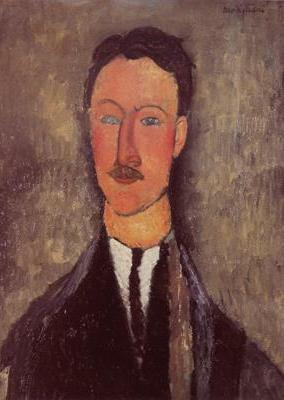
When he was young, Léopold Survage was expected to work in his Finnish father's piano factory. He learned to play the piano and finished a business degree in 1897. But after a serious illness at age 22, Survage decided to change his path. He enrolled in the Moscow School of Painting, Sculpture and Architecture.
He learned about modern art from the amazing collections of Sergei Shchukin and Ivan Morozov. Survage joined the Russian avant-garde, a group of artists who liked new and experimental art. By 1906, he was connected to a magazine called Zolotoye runo (Golden Fleece). He met Alexander Archipenko and showed his art with him and other artists like Mikhail Larionov.
With Hélène Moniuschko, who later became his wife, he traveled to Europe. They visited Paris in July 1908. The couple eventually settled in Paris. Survage worked as a piano tuner and briefly attended a short-lived art school run by Henri Matisse. He showed his work with the Jack of Diamonds group in Moscow in 1910. He first showed his art in France in 1911, encouraged by Archipenko.
In 1913, Survage created abstract artworks using colors and movement. He wanted them to feel like music. He called these works Rythmes colorés (Colored Rhythms). He even planned to turn these drawings into animated films to create "color symphonies." He imagined these abstract images flowing together. He showed these ink drawings at art exhibitions in 1913 and 1914. Famous writers like Guillaume Apollinaire wrote about his work.
In June 1914, Survage tried to get a patent from the Gaumont Film Company to develop his film idea. He wasn't successful. If he had found the money, he would have been one of the first artists to create abstract films.
Starting in 1917, Survage shared an art studio with Amedeo Modigliani in Paris. Survage later moved to Nice. For the next eight years, he created many structured paintings and drawings. These works often used repeating symbols like man, sea, building, flower, window, curtain, and bird. It was as if these symbols were characters in a moving story.
By 1922, Survage began to move away from the Cubist style of art. He started to use a more classical style. This might have been because he received commissions for Serge Diaghilev's Ballets Russes. He designed sets and costumes for the opera Mavra in 1922. Even though he was mainly a painter, he also designed for the stage, tapestries, and textiles. He even worked for the fashion house Chanel in 1933.
Towards the end of the 1930s, Survage became more interested in symbols and mystical ideas. This happened after he met André Masson. The curvy shapes that were common in his earlier art once again became part of more geometric designs.
On March 12, 1963, Survage was given a special honor called Officer of the Légion d'Honneur. He passed away on October 31, 1968, in Paris.
Art Shows and Collections
Léopold Survage's art has been shown in many important exhibitions and is part of famous art collections around the world.
Selected Exhibitions
- 1968: Musée des beaux-arts, Lyon
- 1930: Museum of Modern Art, New York
- 1929: Knoedler Gallery, New York
- 1920: Galerie de L'Effort Moderne, Paris
- 1914: Salon des Indépendants, Paris
- 1913: Salon d'Automne, Paris
Selected Collections
- Musée national d'art moderne Georges Pompidou, Paris
- Bezalel Museum, Jerusalem
- Tretyakov Gallery, Moscow
- Musée des beaux-arts, Lyon
- Musée du Petit Palais, Geneva
- Musée national d'art moderne, Paris
- San Francisco Museum of Modern Art
- Museum of Modern Art, New York
- National Museum of Arts, Moscow
- National Museum, Athens
See also
 In Spanish: Léopold Survage para niños
In Spanish: Léopold Survage para niños


